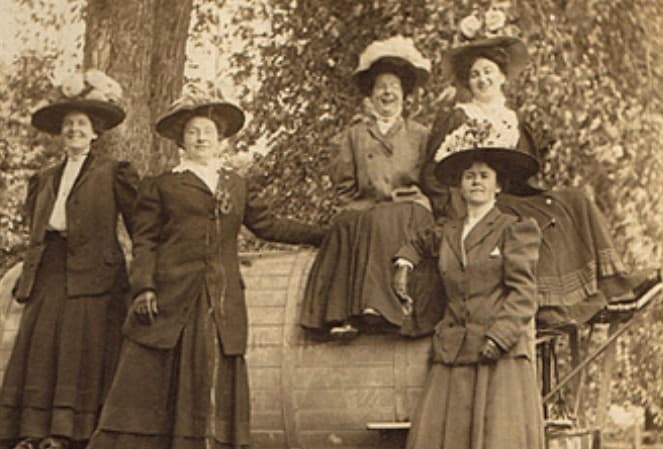For better or for worse, men and women have always lived together, despite their differences. Even in loving relationships and marriages, it is sometimes impossible for men to understand women, and vice versa. Despite all of the problems over the course of humanity, these arguments and misunderstandings between the genders are usually debated or simply accepted for the sake of a peaceful co-existence. It brings to mind the famous phrase, “You can’t live with them, buy you can’t live without them.” Or…Can you?
Since the 1800’s, feminist groups around the world have decided that enough was enough, and they would be better off building off their own peaceful societies without men. These all-female communities range from a boarding house full of women all the way to the extreme; a commune where only women are allowed to enter.

1. Martha McWhirter Saved Women From Unhappy Marriages
This trend of all-female communities started way back in 1860, when a happily married woman named Martha McWhirter ran a Bible study group at the Union Sunday School in Belton, Texas. Martha McWhirter and her husband, George, actually had a very happy marriage, and they were heavily involved in the Methodist church. They both had a passion for helping others that were in need, and that is how they spent most of their free time.
Many of the middle-class housewives who showed up at Martha’s Bible study became close friends, and they began to open up to one another, because they felt like this group was a safe space. Many of them prayed every single week for their husbands to stop drinking, beating, and abusing them. These women could not leave their abusive marriages, because they had children, and the social norm at that time was to stay together for the kids. The women were also financially dependent on their husbands, because it was not normal for middle-class wives to work at that time, and they didn’t have good childcare options, either. They were truly powerless to change their lives, and could only pray to God and wish that there was an option for them to leave their husbands and live independently.
At this time, almost no one ever got divorced, either. In most states, a judge would not grant the divorce unless the woman was beaten near-death on a regular basis, and there needed to be proof. People could not afford to outrageously expensive legal fees to get divorced, either. Even when people could afford it, most would stay legally married and live separately, but they were not allowed to get married a second time. Since the situation was so difficult, most people opted to simply stay together in an unhappy marriage.
After hearing all of these stories from all of these women, Martha McWhirter grew more and more angry at the plight of abused and unhappy women. She encouraged the ladies in her group to stop pretending like everything was OK when it wasn’t, and to confront their husbands about their marital issues. She wanted them to try to make their relationships better, but if the man refused to make peace, then the women should not have to put up with abuse.
At that time, women were raised to “be seen and not heard”, and it was unladylike to get angry. Many of these women did not even have the strength or the self-worth to confront their husband when they did something wrong, express their anger, or to even speak up and voice their opinions. Martha Mcwhirter began to encourage these women to stop having sex with their husbands if they truly hated them and wished they could afford divorce. The advice that she gave the unhappy ladies in the group was that they should continue to do their daily household chores, take care of the kids, and that’s it.
This may sound like a small thing, especially since we have marriage counseling today where both partners talk about their problems. And by today’s standards, just about everyone has heard of putting your husband “in the dog box” when the wife gets really mad, but this was revolutionary for the time. It was the very beginning of feminism and the women’s empowerment movement.

